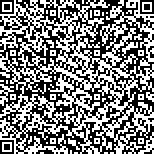| 摘要: |
| [摘要] 目的 探讨老年阻塞性睡眠呼吸暂停(OSA)合并认知功能障碍患者睡眠及脑功能状态特点。方法 招募2022年2月至2023年10月在广西壮族自治区人民医院广西睡眠呼吸疾病诊疗中心就诊的OSA老年患者102例。采集患者多导睡眠监测参数、脑功能状态数据,使用焦虑自评量表(SAS)、抑郁自评量表(SDS)和症状自评量表(SCL90)评估患者的情绪状态,通过匹兹堡睡眠量表(PSQI)评估患者的睡眠质量,用简易智力状态检查量表(MMSE)评估老年人群认知功能损伤程度等。根据MMSE评分将患者分为OSA合并认知功能障碍组(<27分,60例)和单纯OSA组(≥27分,42例),比较两组间多导睡眠监测指标以及脑功能状态指标,分析MMSE评分与脑功能状态、多导睡眠监测指标以及其他量表评分的相关性。结果 OSA合并认知功能障碍组的SDS、SCL90和PSQI评分均显著高于单纯OSA组(P<0.05),MMSE评分(包括定向力、记忆力、回忆能力、语言能力、注意力和计算力评分)及饮酒人数占比显著低于单纯OSA组(P<0.05)。OSA合并认知功能障碍组N2期占比和N2期睡眠时间高于单纯OSA组,非快速眼动(NREM)期AHI和总睡眠期AHI低于单纯OSA组,差异均有统计学意义(P<0.05)。Spearman相关分析结果显示,MMSE评分与NREM期PLM指数(rs=-0.243,P=0.014)、睡眠期PLM指数(rs=-0.237,P=0.016)、N2期睡眠时间(rs=-0.243,P=0.014)、SDS评分(rs=-0.244,P=0.014)以及SAS评分(rs=-0.218,P=0.028)呈负相关关系。多元线性回归分析结果显示,N2期睡眠时间与OSA患者认知功能下降有关(β=-0.019,P=0.017)。结论 OSA合并认知功能障碍患者焦虑、抑郁情绪更明显,焦虑、抑郁症状越重,OSA患者认知功能越差。抑郁、焦虑等情绪问题可能会加速OSA患者的认知功能减退,主要是影响患者的定向力、语言能力、注意力和计算力。睡眠片段化、慢性睡眠剥夺、睡眠结构改变、主观睡眠质量差可能是导致OSA患者认知功能下降的主要因素。 |
| 关键词: 老年人 阻塞性睡眠呼吸暂停 认知功能障碍 睡眠结构 脑功能 |
| DOI:10.3969/j.issn.1674-3806.2024.01.03 |
| 分类号:R 563 |
| 基金项目:国家自然科学基金项目(编号:82260021);广西自然科学基金项目(编号:2022GXNSFBA035655);广西科技重大专项项目(编号:桂科AA23023004);广西医疗卫生适宜技术开发与推广应用项目(编号:S2021046);广西壮族自治区人民医院青年基金项目(编号:QN-2021-28) |
|
| Characteristics of sleep and brain function status in elderly patients with obstructive sleep apnea complicated with cognitive disorder |
|
QIN Lixia, ZHONG Qingqing, LU Yian, TANG Binjun, SHI Lingli, PAN Fengjin, LIANG Bifang, CHEN Roujun, ZHAO Mingming
|
|
Department of Sleep Medicine, Guangxi Research Center for Sleep Medicine in Clinical Medical Sciences, the People′s Hospital of Guangxi Zhuang Autonomous Region(Guangxi Academy of Medical Sciences), Nanning 530021, China
|
| Abstract: |
| [Abstract] Objective To explore the characteristics of sleep and brain function status in elderly patients with obstructive sleep apnea(OSA) complicated with cognitive disorder. Methods A total of 102 OSA elderly patients who visited the doctors in Guangxi Center for Diagnosis and Treatment of Sleep-Related Respiratory Diseases, the People′s Hospital of Guangxi Zhuang Autonomous Region from February 2022 to October 2023 were recruited. Polysomnography monitoring parameters and brain function status data were collected, and the emotional state of the patients was assessed using Self-Rating Anxiety Scale(SAS), Self-Rating Depression Scale(SDS) and Symptom Checklist 90(SCL90), the sleep quality was assessed using the Pittsburgh Sleep Quality Index(PSQI), and the cognitive impairment degree was assessed using Mini-Mental State Examination Scale(MMSE). The patients were divided into the OSA complicated with cognitive disorder group(with MMSE scores <27 points)(60 cases) and the simple OSA group(with MMSE scores ≥27 points)(42 cases) according to different MMSE scores. The indicators of polysomnography monitoring and the indicators of brain function status were compared between the two groups, and the correlation of MMSE scores with brain function status, polysomnography monitoring indicators and the other scales scores was analyzed. Results The scores of SDS, SCL90 and PSQI in the OSA complicated with cognitive disorder group were higher than those in the simple OSA group(P<0.05). The MMSE scores(including orientation, memory, recall ability, language ability, attention and calculation ability scores) and the proportion of the patients drinking alcohol in the OSA complicated with cognitive disorder group were significantly lower than those in the simple OSA group(P<0.05). The proportion of N2 phase and sleep time in N2 phase in the OSA complicated with cognitive disorder group were higher than those in the simple OSA group. The apnea hypopnea index(AHI) in the non-rapid eye movement(NREM) phase and the AHI in the total sleep phase in the OSA complicated with cognitive disorder group were lower than those in the simple OSA group, and the differences were significant(P<0.05). The results of Spearman correlation analysis showed that MMSE score was negatively correlated with PLM index of the NREM phase(rs=-0.243, P=0.014), PLM index of the sleep phase(rs=-0.237, P=0.016), sleep time of the N2 phase(rs=-0.243, P=0.014), SDS score(rs=-0.244, P=0.014) and SAS score(rs=-0.218, P=0.028). The results of multivariate linear regression analysis showed that the sleep time of the N2 phase was related to decline in cognitive function in the OSA patients(β=-0.019, P=0.017). Conclusion The anxiety and depression of OSA patients with cognitive disorder are more obvious, and the more severe the anxiety and depression symptoms, the worse the cognitive function of the OSA patients. Depression, anxiety and other emotional problems may accelerate the cognitive decline of the OSA patients, mainly affecting the orientation, language ability, attention and calculation ability of the patients. Sleep fragmentation, chronic sleep deprivation, changes in sleep structure and poor subjective sleep quality may be the main factors leading to cognitive decline in the OSA patients. |
| Key words: The elderly Obstructive sleep apnea(OSA) Cognitive disorder Sleep structure Brain function |

